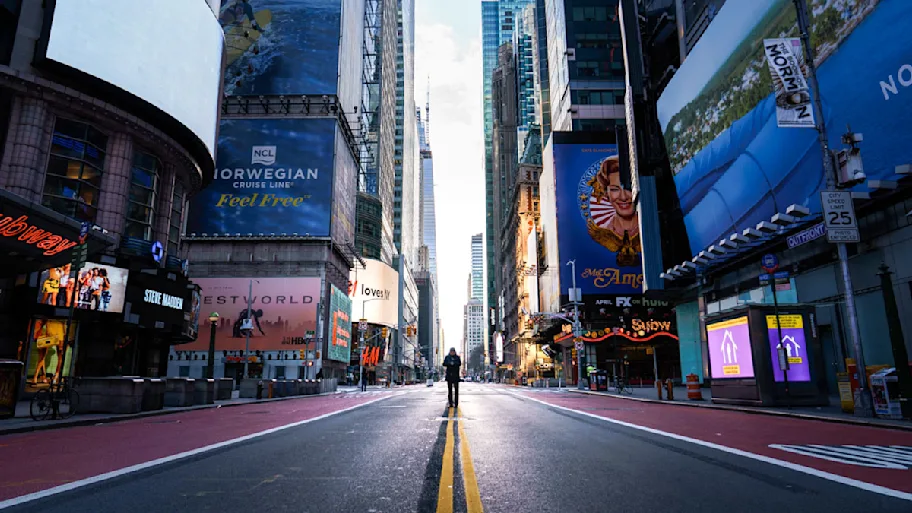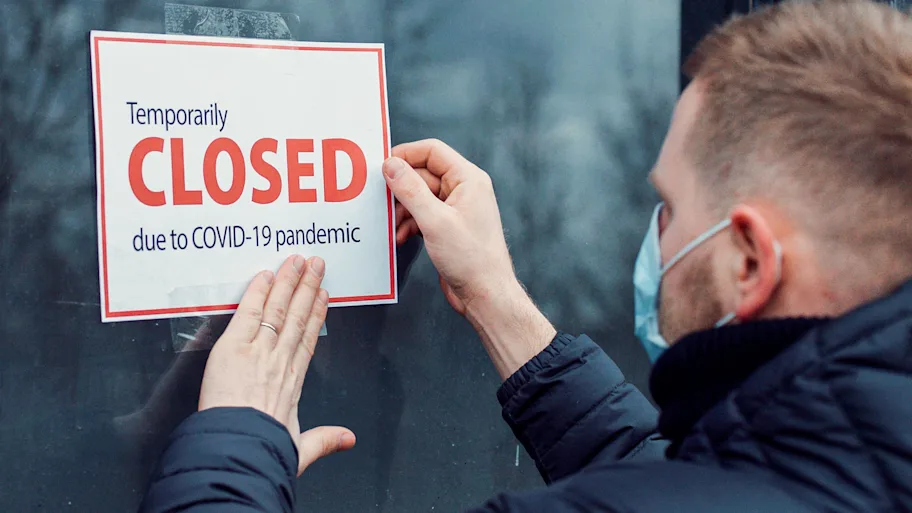
- Science news
- Health
- Researchers show mathematically how to best reopen your business after lockdown
Researchers show mathematically how to best reopen your business after lockdown
By Mischa Dijkstra, Frontiers science writer
Model shows that Covid-19 can stay under control inside your company only if social distancing, PPE, and other measures are implemented for employees not working from home. These measures will also protect your net profit.
In the USA, where the curve of infections has not flattened since the beginning of the pandemic, 158,000 people have died from Covid-19 already. And despite the choice by all US states to gradually ease lockdown from late May onwards to save the economy, 14 million Americans have lost their job, while the economic output in the second quarter of 2020 dropped by 9.5%. To help entrepreneurs decide on how they can safely reopen their business, mathematicians and statisticians here develop a model for the spread of infections within companies and the economic payoff of safety measures. Their findings are published today in Frontiers in Applied Mathematics and Statistics.
“Our aim was to provide a quantitative yet simple modeling tool for business executives to plan for reopening their workplace,” says lead author Prof Hongyu Miao, Director of the Center for Biostatistics Collaboration and Data Services at the University of Texas Health Science Center in Houston, Texas.
The authors show mathematically that, under a wide range of parameters, reopening your business will only be feasible if at least these safety measures are adopted: wearing goggles, gloves, and masks (when employees aren’t alone); frequent hand washing; routine sanitation of the workfloor; social distancing; monitoring body temperature; and quarantine of exposed and sick employees. These measures won’t only control the spread of covid-19 within the company, but also maximize your net profit under the assumptions of the model.
“We show that a business entity may stand a good opportunity to generate positive net profit after reopening only if necessary protection measures are strictly implemented,” warns Miao. “It is also very important to monitor the number of infections through virus testing and contact tracing, especially at the early stage of reopening.”
Mathematical Modeling of Business Reopening when Facing SARS-CoV-2 Pandemic: Protection, Cost and Risk► Read original article► Download original article (pdf)
About the model
Miao and colleagues first developed – and (approximately) solved numerically – five linear differential equations for the numbers of susceptible, infectious, quarantined, deceased, and recovered employees within a company. These asssumed that all workers who can work from home do so, and that workers self-quarantine as soon as they present symptoms, or if they have been in close contact with a known carrier. They further assumed that infected employees who aren’t detected – because they are asymptomatic or only mildly symptomatic cases, in the early stages of the disease, or apparently recovered but still infectious – can continue to infect their susceptible coworkers as “silent spreaders”, and that sick and quarantined workers receive their full pay.
In addition, the authors modeled the net profit, based on the average salary and productivity of US workers, the cost of PPE and other safety measures, and the reduction in productivity expected from a limit on working hours and the need for distancing. They estimated values for key parameters from the literature, for example the effectiveness of PPE in preventing transmission, the expected pricetag of these measures, and the dynamics of infection.
Four scenarios compared
The authors then took a large, well-known Texan company as a hypothetical example. Under the least safe scenario, where no safety measures are taken, the prevalence of Covid-19 within the company steadily rises to become 30-fold higher than in the general US population, indicating that reopening won’t be feasible. Under the safest scenario, where all possible safety measures are adopted, its prevalence falls to 104-fold lower than in the population, resulting in a higher and more stable net profit. Results are similar under the second-safest scenario, where only the most expensive measures are omitted – non-contact sensors for real-time fever detection, reducing working hours by 30% to limit exposure, and UV purification or High-Efficiency Particulate Air (HEPA) filters that prevent viral transmission in aerosols. Finally, under the third-safest scenario, where employees further drop the use of PPE, the workplace again quickly becomes a “hot spot” of infection, resulting in a lower net profit.
Original article: Mathematical Modeling of Business Reopening when Facing SARS-CoV-2 Pandemic: Protection, Cost and Risk
REPUBLISHING GUIDELINES: Open access and sharing research is part of Frontiers’ mission. Unless otherwise noted, you can republish articles posted in the Frontiers news blog — as long as you include a link back to the original research. Selling the articles is not allowed.






